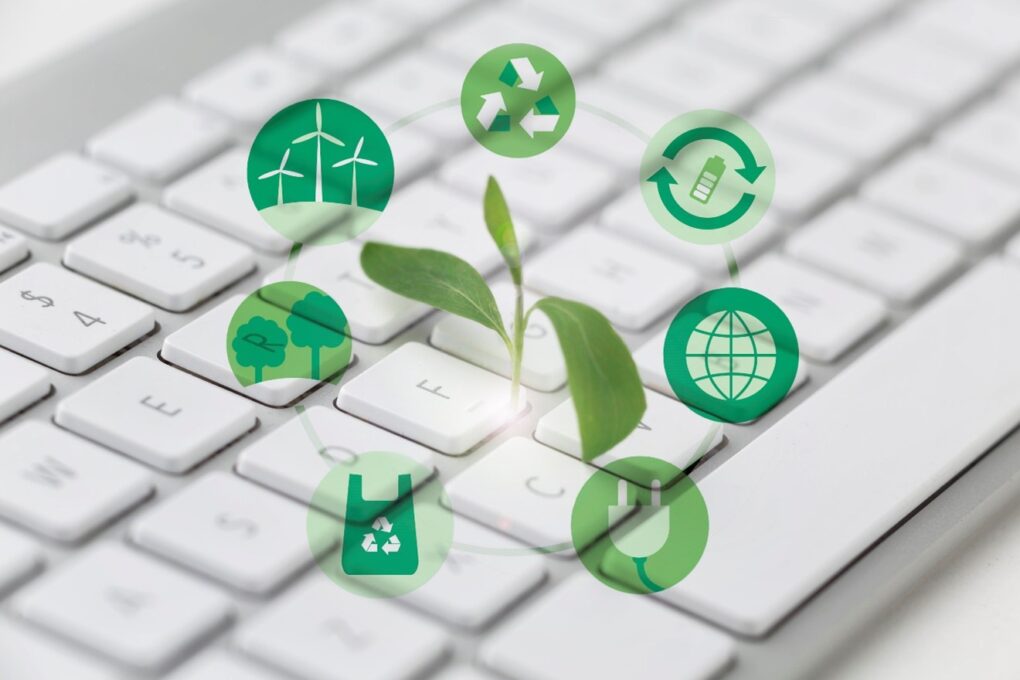Sustainability and Green Software Development
In today’s fast-paced tech-driven world, the industry plays a significant role in our planet’s carbon footprint. While we often think of industries like manufacturing and transportation as the biggest contributors to global emissions, the tech sector is also a key player. At Codeness Lab, we believe that the tech industry has a responsibility to embrace sustainability. One of the most effective ways we can contribute is by focusing on green software development—the practice of writing code that is energy-efficient and resource-conscious.

How the Tech Industry Impacts the Environment
The tech industry’s environmental footprint mainly comes from data centers and cloud computing infrastructure, which require enormous amounts of energy. As more businesses and consumers rely on cloud services, the demand for energy increases, often from non-renewable sources.
In addition to energy consumption, carbon emissions are a significant concern. The electricity needed to power data centers, as well as the resources consumed by manufacturing and running servers, contributes to global carbon dioxide release. This makes software optimization, energy-efficient code, and sustainable tech practices more important than ever.
What is Green Code and How Does it Help the Environment?

Green code refers to software that has been specifically designed to be energy-efficient. Writing energy-efficient code can drastically reduce the environmental impact of a digital product. Whether it’s optimizing algorithms, reducing server load, or eliminating unnecessary processing, the goal is to minimize the power required for software execution.
In an era where mobile apps, websites, and cloud services are running 24/7, small changes in how code is written can have a massive impact. By focusing on green software development, we can help reduce the strain on data centers and lower the carbon emissions associated with running software applications.
The Role of Programming Languages in Sustainability
It’s not just the design of the software that matters—the programming language used to write the code can also have a significant impact on energy efficiency. Some languages are more power-efficient than others, as they allow developers to write code that makes optimal use of system resources. For example:
- C, C++, and Rust are known for their efficiency in terms of both speed and memory usage. These languages give developers low-level control over system resources, allowing for better optimization and reduced energy consumption.
- In contrast, higher-level languages like Python and JavaScript are often less power-efficient due to their abstraction layers. These languages provide ease of use for developers but at the cost of additional processing power.
By choosing the right language for the job, developers can ensure that their applications consume less power, ultimately leading to a reduction in the carbon footprint.

Reducing Carbon Emissions through Smart Tech Practices
The carbon release associated with software development and cloud services is a major contributor to global warming. As more businesses transition to digital solutions, this issue becomes even more pressing. However, there are several ways the tech industry can reduce its carbon footprint:
- Energy-Efficient Hardware: Upgrading to energy-efficient hardware and utilizing low-power devices can reduce the overall energy consumption of data centers and systems running applications.
- Renewable Energy Sources: Moving data centers to renewable energy sources such as solar, wind, or hydroelectric power can help drastically cut down carbon emissions.
- Optimizing Software: Reducing the amount of processing required by software, optimizing code, and adopting green hosting solutions are all effective methods for reducing power consumption.

How Codeness Lab Contributes to a Sustainable Tech Industry
At Codeness Lab, sustainability is at the core of everything we do. We are committed to optimizing the software we build, ensuring that it runs efficiently while reducing the environmental impact. Our developers focus on:
- Writing energy-efficient code that consumes fewer resources and reduces the overall energy usage of applications.
- Partnering with green hosting services that prioritize renewable energy to power the servers that run our apps.
- Continuously innovating in the realm of AI and optimization to ensure that our solutions are not only cutting-edge but also sustainable.
We believe that by leading with innovation and eco-conscious practices, we can help the tech industry move towards a more sustainable future.
Join the Movement Toward Greener Tech
Sustainability in tech isn’t just a trend—it’s a responsibility. Whether you’re a startup founder, product manager, or developer, your choices matter. From the code you write to the infrastructure you use, every decision shapes the future of our planet.
At Codeness Lab, we’re proud to be part of the solution. If you’re looking to build smarter, cleaner, and more efficient digital products, we’re here to help. Let’s talk about how we can bring sustainable innovation to your next project. Reach out to us at info@codenesslab.com or explore our services to learn more.
FAQ:
1. Can programming languages really affect energy consumption? Yes! The programming language you use can have a direct impact on how much energy your application consumes. Some languages, like C, C++, and Rust, are more power-efficient because they allow developers to have low-level control over system resources. On the other hand, higher-level languages like Python or JavaScript may consume more power due to their higher abstraction layers.
2. How does carbon release impact the tech industry? The tech industry, particularly through data centers and cloud computing, is a significant contributor to global carbon emissions. The energy consumed by data centers, often powered by fossil fuels, leads to increased carbon emissions. By optimizing software and adopting renewable energy sources, the industry can reduce its environmental impact and move toward more sustainable practices.
3. What can tech companies do to reduce their carbon footprint? Tech companies can take several steps to reduce their environmental impact:
- Switch to renewable energy sources for data centers and infrastructure.
- Use energy-efficient hardware to lower power consumption.
- Optimize software to reduce energy consumption, such as reducing the number of server requests or processing cycles.
- Move to green hosting solutions powered by sustainable energy.
By implementing these sustainable practices, the tech industry has the power to make a significant impact on global carbon reduction efforts.
Tell us about your thoughtsWrite message